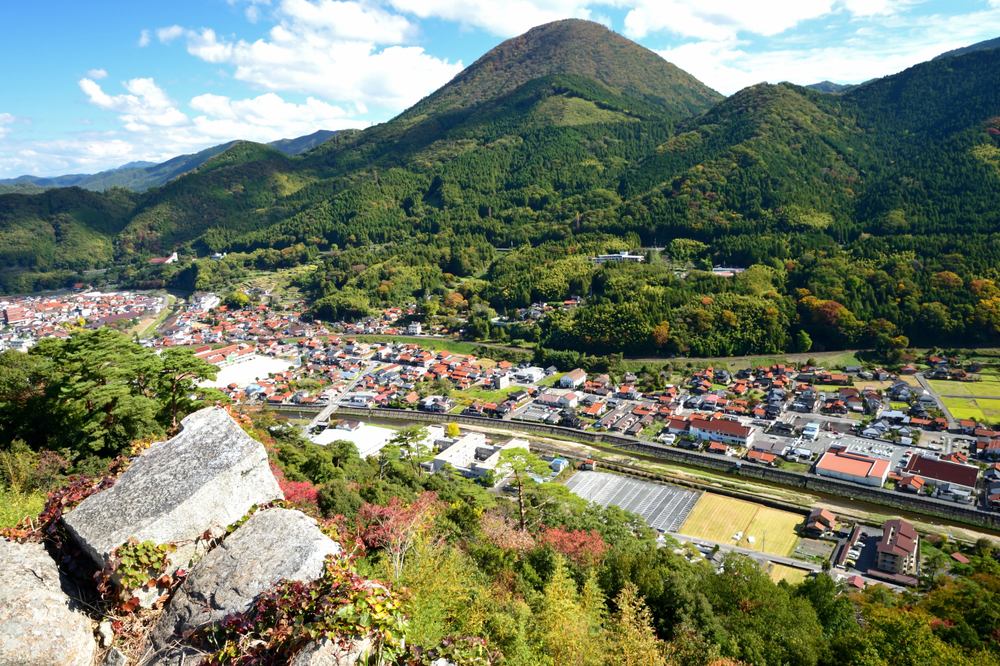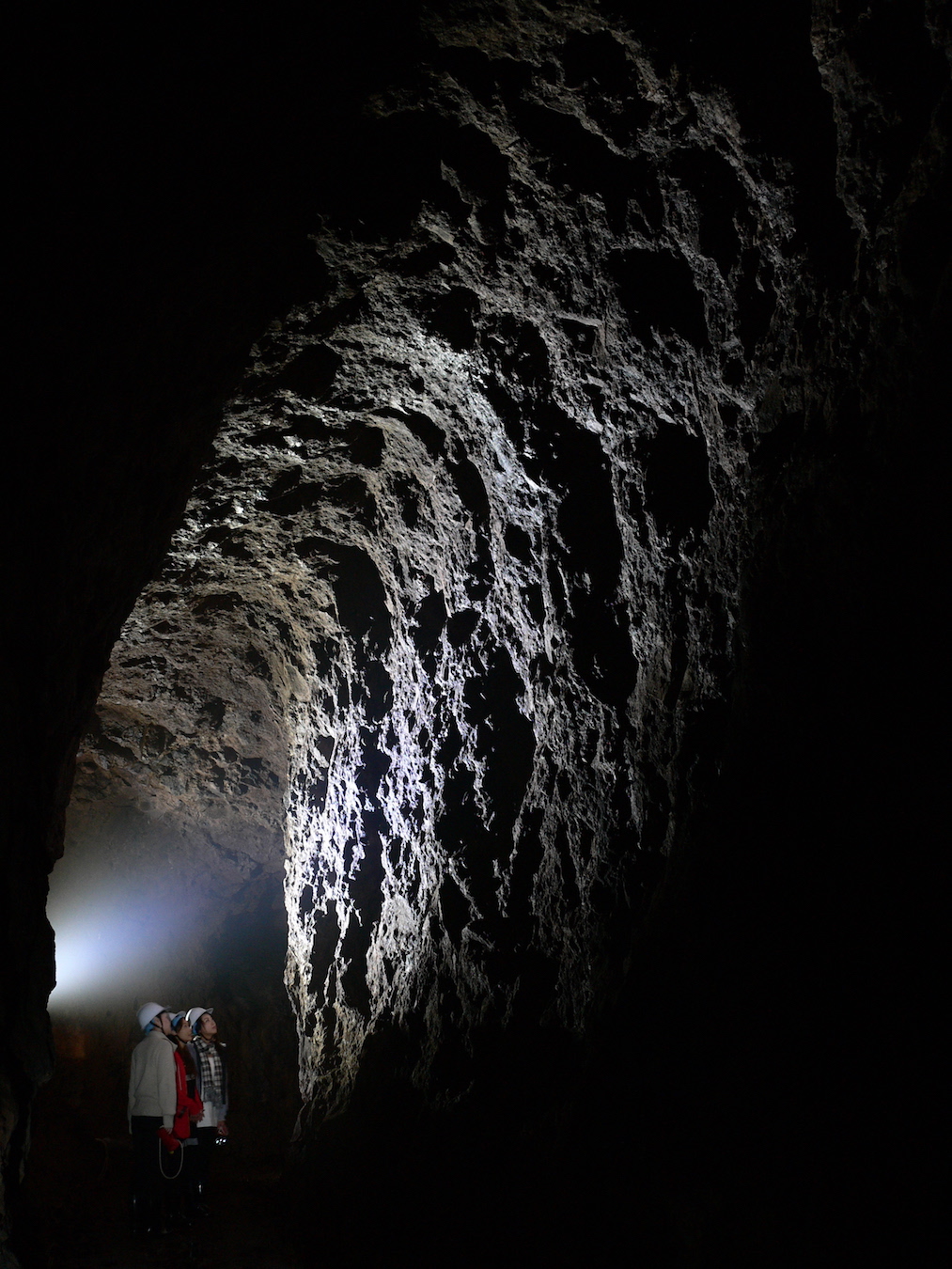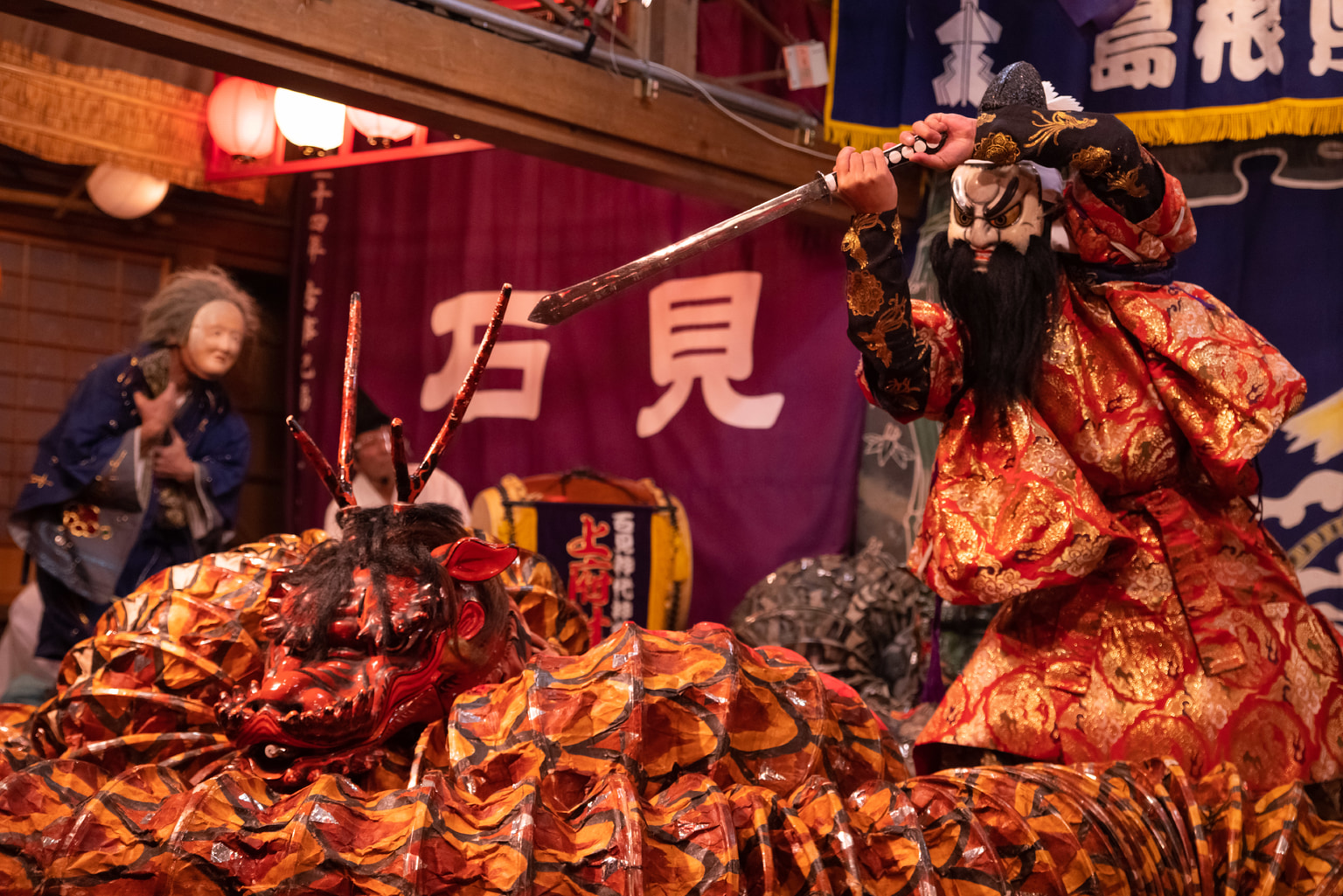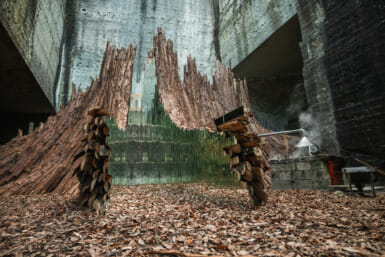Located between the dramatic vistas of the wild Japan Sea coast and the imposing Chugoku mountains, the region of Shimane Prefecture brings a clichéd phrase to life since it really does have something for everyone: outdoor experiences, a storied sake culture and thriving arts such as the vibrant Iwami Kagura folk dances, where ancient legends are brought to life.
Ancient Forests & Silver Mines
Begin your tour through Shimane’s many offerings in the city of Oda, located at the northern end of the prefecture’s long coastline. Lying slightly inland is the geologically fascinating Sanbe-Azukihara Buried Forest, where trees were unearthed during work on local rice fields in 1983. Further excavation revealed that the forest was blanketed in ash following the eruption of the adjacent Mount Sanbe nearly 4,000 years ago, during the Jomon era. The massive trees may be viewed by descending into the onsite underground museum, and the grounds also offer some relaxing trails for walking.
Further southwest in Oda city lies the site of the Iwami Ginzan Silver Mine, a UNESCO World Heritage site whose roots lie in the same volcanic eruption that buried the forest near Mount Sanbe. The mine was active for 400 years, from the 1520s through the 1920s. During its peak production period, it was responsible for most of Japanese silver. At the time, the country produced roughly one-third of the world’s silver. The atmospheric buildings in the local town of Omori have been preserved to reflect the spirit of an Edo-era mining town, and are wonderful for strolling. Consider lunch or coffee at lifestyle shop Gungendo, which offers healthy fare and an extensive array of local goods along with an upstairs art museum.
The mine itself can be reached via a pleasant forested path that takes around 30-40 minutes on foot from Omori. Alternatively, bicycles may be rented (no motor vehicles may access the area around the mine). There are some 600 mine shafts here, among which Ryugenji Mabu is the only one open to the public. For a more adventurous experience, explore the Okubo Mabu mine shaft, which requires the use of a helmet, boots and flashlight, and which may only be visited via a guided tour. Reservations are required for the tours, which are normally conducted in Japanese (please inquire regarding the possibility for tours in English). The tour is also unavailable during the winter months, when the passageway becomes a habitat for hibernating bats.
Japanese Traditions Kept Alive in Shimane
Should you find yourself visiting Shimane on the third weekend of September, you are in for one of the most spectacular experiences the prefecture has to offer: an oceanfront viewing of the Iwami Kagura folk dances, performed around sunset time at Fukumitsu beach in the adjacent town of Yunotsu Onsen. While this is arguably the most visually striking way to watch these dances – which recount ancient legends found within Japan’s earliest historical chronicles – the performances take place throughout the year in various Shimane prefectural locales. The dances are sometimes held as exuberant all-night affairs on the grounds of local temples, which are attended by local residents of all ages. Performances offer a close-up look at the superb craftwork of masks and costumery, along with an intimate glimpse into a timeless local tradition that has been proudly handed down through the generations.
Another remnant of local history remains in the old trading port of Tonoura, located further southward in the city of Hamada: the culture of trading seafarers from the Kitamae-Bune, “northern bound ships.” These vessels sailed the rough waters of the Japan Sea from Osaka to Hokkaido between the mid-1700s through the early 1900s, transporting items such as salt, herring, rice, paper, knives and clothing, and earning up to the modern equivalent of one million yen during their heyday. Stand atop Mt. Hiyoriyama in Tonoura Bay, alongside the stone compass once utilized by the trading ships, to feel this history while gazing at the magnificent seascape below.
Castles & Shrines
The final stops in your Shimane prefectural journey are found along its southernmost coastal border, where you’ll find more remnants of the region’s fascinating history. A medieval feel is retained in the city of Masuda, where Manpuku-ji temple is recognized nationwide for the architecture of its main structure, as well as the unique aesthetics of its stone garden.
In tranquil neighboring Tsuwano, explore the local stone wall ruins for an up-close window into what was once a thriving castle town. The hyakkeizu (“100 views”) of Tsuwano, painted by local 19th-century artist and tea ceremony practitioner Kurimoto Satoharu, are especially meaningful insofar as many of the scenes remain unchanged. This important artistic relic affords us an important insight into understanding Shimane’s cultural heritage more generally, wherein the past and present truly do remain connected in an ongoing unbroken circle.
Sponsored Post












